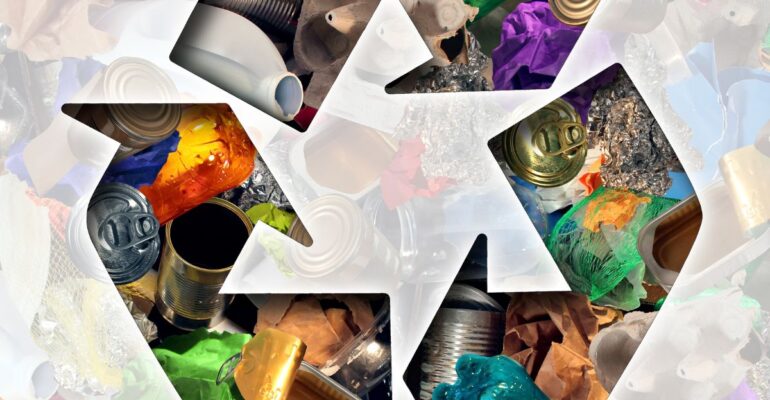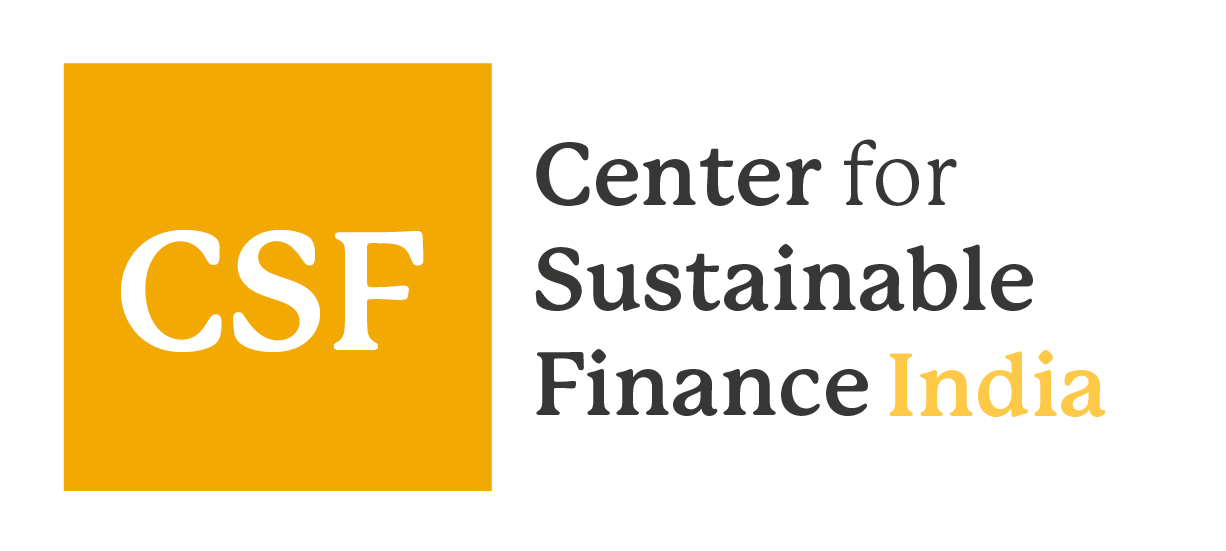
Repairability and Recyclability as Levers for Meeting India’s NDCs—The Case for a Recyclability Index
By Sanjoy Banerjee
India’s Department of Consumer Affairs recently submitted a report on a Framework for the Repairability Index (RI) for the mobile and electronic sector to the government. Under the RI, consumer electronics and electronic appliances would be assigned a score based on the ease of repair, evaluated under criteria such as the availability of spare parts, repair costs, software updates, and access to information. Once the framework is accepted and regulations/guidelines put in place, it will assist India in meeting the goals laid out in its Nationally Determined Contributions (NDCs), as and when extended to other products (e.g., kitchen appliances, washing machines, household goods, auto/EV components, power transmission equipment, and electronics etc). This strategy can become even more effective if accompanied by a recyclability index to ensure responsible consumption and production, furthering the achievement of the Sustainable Development Goals, specifically Goal 12 on sustainable consumption and production.
As a fallout of the ongoing global trade upheaval and the shortage of rare earth metals, due to Chinese export restrictions, the government of India has recently stated that it proposes to introduce an incentive scheme for the recycling of critical minerals such as copper, lithium, nickel, cobalt, and other rare earth elements. The incentives are to be allocated from the INR 1,500 crore budgeted under the National Critical Mineral Mission for the recycling of critical minerals. The scheme is in the final stages of launch. Whilst this has been driven by trade and self-sufficiency imperatives, it also presents a strong case for recycling as part of the climate change commitment imperative.
India’s challenges of climate and waste
India faces the dual challenge of achieving robust economic development while meeting its climate commitments under the Paris Agreement. India’s updated NDC, submitted in 2022, emphasizes reducing the emissions intensity of GDP and increasing the share of non-fossil fuels in the energy mix. While the energy transition and decarbonization of heavy industries receive considerable attention, the often underutilized levers of repairability and recyclability hold significant potential to support India’s goal of reaching Net Zero by 2070.
Incentivizing recyclability is also expected to address India’s mounting challenge of managing urban waste, which amounts to 62 million tonnes annually. Of this, 70% is collected, only 20% is treated effectively, leaving 31 million tonnes to accumulate in landfills.
With changing consumption patterns, rapid economic growth, and urbanization, it is anticipated that municipal solid waste generation will reach 165 million tonnes per year. Additionally, India has also witnessed a surge in e-waste generation over the past five years, rising from 1.01 million metric tonnes to 1.751 million metric tonnes in 2023-24 (source: Ministry of Housing and Urban Affairs, December 16, 2024).
Given the current trend of a linear “Take-Make-Dispose,” there is negligible formal focus/ incentive for organized collection and scientific disposal/recycling of e-waste. This has resulted in 95% of e-waste being collected and processed informally by scrap dealers and kabadiwalas, using unsafe and environmentally damaging methods such as open burning and acid leaching, which emit greenhouse gases and pose significant health and ecological risks.
Extended Producer Responsibility – policies, guidelines, and enforcement
India was an early adopter of an Extended Producer Responsibility policy under the National Environment Policy (NEP) in 2006, aiming to promote sustainable development and environmental protection. The policy underwent significant updates in
- 2001: EPR was implemented with the Batteries (Management and Handling) Rules.
- 2011: The E-waste (Management and Handling) Rules were introduced, making it mandatory for producers to manage e-waste.
- 2016: The Plastic Waste Management Rules were introduced, mandating EPR for plastic waste.
- 2022: Several changes were made, including the inclusion of additional waste categories, such as batteries, waste tires, and used oil.
The objective of the EPR policies is laudable and is meant to make the producers, importers, and brand owners responsible for the entire life cycle of their products, to include:
- Shifting waste management responsibility from local governments to producers so that they can internalize the cost of recycling and disposal within their product pricing and design features.
- Promoting sustainable product design by producers/manufacturers with the appropriate use of sustainable and recyclable materials.
- Taking the responsibility for establishing collection and recycling systems/infrastructure to facilitate the collection, segregation, and recycling /reuse of waste generated from their products. In other words, they play a strong role in formalizing the waste collection, segregation, and recycling/reuse infrastructure through the use of technology, and create formal employment opportunities.
- Minimize pollution and landfill of waste.
- Encouraging circular economy by promoting resource recovery, reuse, and recycling, thereby reducing the requirement for resource extraction and reducing environmental and carbon footprint.
Although the objectives are laudable, EPR has failed to deliver the desired results due to the absence of strong regulatory enforcement, financial incentives, and business and regulatory imperatives. This reinforces the need for a recyclability index to further the cause of regulatory and business imperatives.
Potential of a circular economy approach
Emerging economies must find innovative ways to allocate scarce financial resources to simultaneously address waste, pollution, and climate change goals, thereby ensuring better health and hygiene for their citizens while also mitigating resource scarcity. Simultaneously, developing economies need to create jobs to reap the benefits of their demographic dividends. These imperatives present an opportunity for India to lead in the circular economy, based on reducing and processing waste, reusing resources, and recycling waste and disposed materials into new products. All this with the aid of new formal job creation.
The transition to a circular economy requires sustainable finance for projects that reduce and recycle waste, as well as mitigate the ever-increasing demand for the extraction of natural resources. Repairability and recyclability can reduce product lifecycle emissions, conserve natural resources, generate employment opportunities, promote inclusive development, and ensure stable supply chains.
Circular economy activities can create tremendous economic opportunities that benefit communities, businesses, the planet, and facilitate technological advancement. The Ellen MacArthur Foundation notes that this model provides the tools to tackle climate change and biodiversity loss simultaneously, with the potential to scale across industries, creating value and jobs while making supply chains more resilient and driving economic growth. This can be particularly impactful for sustainability, given that the extraction and processing of natural resources are responsible for more than half of global greenhouse gas emissions and over 90% of biodiversity loss, according to a 2022 report by BNP Paribas.
Leveraging circularity as an approach to meeting climate and sustainability objectives has not yet garnered significant attention in emerging economies and has also seen limited progress globally. According to the 2024 Circularity Gap report, the global circularity rate, which measures the share of materials consumed that are derived from recovered and reprocessed rather than virgin materials, has dropped from 9% in 2018 to just 7% in 2023. The report also highlights that global material consumption over the past six years nearly equaled the total used during the entire 20th century. It also states that six of the nine key planetary boundaries, which measure environmental health across air, water, and land, have been crossed, largely due to the linear ‘Take-Make-Waste’ economy.
This underscores the need for proactive action in high-consumption economies like India. As a consumption-driven economy, India can derive substantial economic and business benefits by directing sustainable finance to drive circularity in the economy and develop newer recycling technologies, rather than wasting planetary resources.
Tailored differentiated state-specific approaches
Indian states show characteristics of both a GROW and BUILD economy across different states. This provides opportunities for differentiated approaches to developing the circular economy in various states, based on their level of economic development. Most of the country’s developed states are characterized by GROW indicators, while underdeveloped states display BUILD characteristics, as shown in the table below.
|
GROW |
BUILD |
|
Rapid economic growth and industrialization |
Wealth is primarily derived from the extraction of natural resources |
|
Challenges such as economic inequality and environmental pressures |
Struggling to meet basic needs at the bottom of the pyramid (healthcare, education) |
|
Increasing material consumption and resource use |
Low material footprint per capita |
The country can therefore incentivize states to adopt circular economy strategies and programs tailored to their specific contexts. While GROW states have the opportunity to leapfrog to more sustainable models as they expand, BUILD states could integrate circular strategies from the outset.
This involves framing policies, building institutional and regulatory structures, creating financing mechanisms and incentives, and utilizing tools to rapidly advance the circular economy in both relatively underdeveloped and developed states through differentiated approaches.
This will require a multi-stakeholder approach involving both central and state governments, industry, civil society, and a sector-wise recyclability policy, as well as an institutional framework, regulations with targets, and financial incentives. Data availability, aggregation, and analysis will be crucial to the success of circularity initiatives. Climate disclosures can also act as critical inputs for measuring circularity, with recyclability expected to have a favorable impact on the Scope 2 and 3 emissions of corporate entities.
Recyclability index
India needs to promote technological development and embrace new and emerging technologies, such as AI, while ensuring sufficient job creation to avoid non-inclusive growth that leads to increased social inequality. The twin pillars of the circular economy — repairability and recyclability — have the potential to make growth more inclusive and just.
Being the most populous country in the world, India needs to create jobs whilst adopting newer technologies, including AI, which can lead to potential job losses, whilst making the economy more efficient. Repairability and Recyclability, on the other hand, have the potential to create more jobs by formalizing the repair and recycling sectors, providing paying jobs with better living and working conditions. Currently, both sectors in India are fragmented and unorganized, operating under deplorable conditions. Formalizing the sector will further the need for skilled workers to tap, collect, segregate, and recycle or reuse products. Thus, creating more organized, better-paying jobs and reskilling or upskilling workers.
Developing a recyclability index to complement the currently proposed repairability index, indicating the extent to which materials used are amenable to recycling or reuse through end-of-life buyback by the manufacturer, would go a long way in building a circular economy, while promoting newer recycling technologies and job creation. The linear ‘Take-Make-Waste’ economy needs to shift to a ‘Make-Use-Recycle/Return/Reuse’ model.
Introducing a recyclability index would help enforce extended producer responsibility across all products that carry a recyclability score, ensuring enforceability with definite, measurable metrics, direct financial resources, and technology to organize the waste management and recycling industry, thereby reducing the impact on climate change.
As a suggestion, the recyclability index could reflect a combination of the producer’s/manufacturer’s commitment and investment in EPR and the extent to which the product(s) have been designed using recyclable material.
Building waste management and recycling infrastructure, as well as developing newer commercial technologies for segregating and recycling materials, would require directed financial resources through the green and sustainability-linked bonds route.
The scope of the Swachh Bharat Mission Phase II, which aims at a garbage-free economy, can be suitably extended to include a focus on waste collection, segregation, and recycling, furthering the development of a circular economy.
